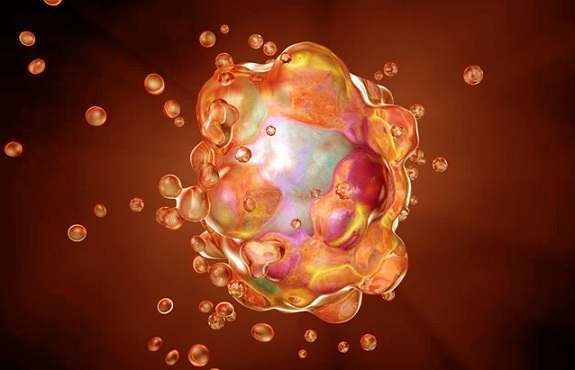Nikhil Prasad Fact checked by:Thailand Medical News Team Feb 05, 2025 2 months, 1 week, 1 day, 22 minutes ago
Medical News: Viruses are among the most adaptable and persistent pathogens on the planet, capable of hijacking the body’s cellular mechanisms to survive and spread. One of the key ways viruses interact with their host is by manipulating programmed cell death (PCD), a natural defense mechanism used by the body to control infections and eliminate damaged cells. This
Medical News report delves into the intricate battle between viruses and cell death pathways, shedding light on how different viruses either trigger or inhibit these mechanisms to their advantage.
 Understanding the Relationship Between Viruses and Cell Death
Research Institutions Behind the Study
Understanding the Relationship Between Viruses and Cell Death
Research Institutions Behind the Study
The study, conducted by researchers from Khoy University of Medical Sciences in Iran, EGE University in Turkey, and Tabriz University of Medical Sciences in Iran, explores the various pathways of cell death and how viruses manipulate these processes. The research offers new insights into potential therapeutic strategies aimed at controlling viral infections through targeted interventions in cell death mechanisms.
The Major Types of Programmed Cell Death
There are several forms of PCD, each with distinct characteristics and roles in maintaining cellular balance. The four primary types include:
-Apoptosis: A non-inflammatory, controlled form of cell death that eliminates infected or damaged cells without harming surrounding tissues.
-Autophagy: A self-digesting process where cells degrade their own components to recycle nutrients, sometimes used by viruses to enhance their survival.
-Necroptosis: A highly inflammatory form of cell death that triggers immune responses to eliminate infected cells.
-Pyroptosis: An inflammatory cell death mechanism that helps clear infections but can also lead to excessive tissue damage.
Each of these pathways can be manipulated by viruses to either evade immune detection or facilitate their replication and spread.
How Viruses Manipulate Cell Death Pathways
-Apoptosis and Viruses
Viruses can either induce or suppress apoptosis depending on their replication strategy. Some viruses, such as HIV and influenza, trigger apoptosis in immune cells to weaken the body’s defenses. Others, like herpes simplex virus (HSV) and cytomegalovirus (CMV), inhibit apoptosis to prolong the survival of infected cells, allowing more time for viral replication.
-Autophagy and Viral Survival
While autophagy typically helps cells clear out damaged components, some viruses exploit this mechanism to their advantage. Hepatitis C virus (HCV) and human papillomavirus (HPV) manipulate autophagy to create an environment conducive to viral replication. However, in some cases, autophagy can still function as a def
ense mechanism by degrading viral particles before they spread.
Necroptosis and Pyroptosis in Viral Infections
Necroptosis serves as a backup mechanism when apoptosis is blocked by viral proteins. Certain viruses, such as poxviruses and herpesviruses, actively suppress necroptosis to prevent immune responses. On the other hand, some viral infections, including those caused by influenza and coronaviruses, can trigger pyroptosis, leading to widespread inflammation and severe tissue damage.
Implications for Treatment and Future Research
Understanding how viruses manipulate PCD pathways is crucial for developing effective antiviral therapies. Researchers are exploring drugs that can either enhance or inhibit specific cell death pathways to control infections. For example, targeting viral proteins that block apoptosis may help eliminate infected cells more efficiently. Similarly, modulating necroptosis and pyroptosis could reduce excessive inflammation and prevent severe disease progression.
Conclusion
The intricate interplay between viruses and programmed cell death is a major factor in disease progression and immune response. By uncovering the molecular strategies used by viruses to manipulate these pathways, scientists can develop new antiviral treatments that improve patient outcomes. Future research will continue to explore ways to harness cell death mechanisms to combat viral infections more effectively.
The study findings were published in the peer-reviewed journal: Advances in Virology.
https://onlinelibrary.wiley.com/doi/10.1155/av/5750575
For the latest on Viruses, keep on logging to Thailand
Medical News.
Read Also:
https://www.thailandmedical.news/news/ferroptosis-and-its-role-in-multi-organ-complications-in-covid-19-unveiling-potential-therapies
https://www.thailandmedical.news/news/iron-driven-cell-death-could-combat-ebv-linked-tumors
https://www.thailandmedical.news/news/the-hidden-dangers-of-iron-overload-how-iron-can-harm-heart-cells
